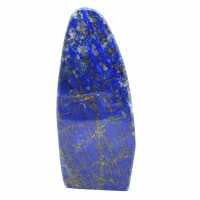Minerals from Afghanistan
The geology of Afghanistan is complex, with many active tectonic zones and rocks that vary greatly in age and type. The oldest rocks in Afghanistan are the gneisses and shales which are found in the Pamir region in the northeast of the country. The youngest rocks are the sedimentary and volcanic formations found in the Hindu Kush basin in the northwest of the country.
Afghanistan is also rich in metallic minerals such as gold, silver, copper, iron, lead, zinc and tin. Non-metallic minerals include fluorite, sulfur, salt, talc, mica, marble, and lapis lazuli.
Lapis lazuli is a bright blue mineral that is mined in Badakhshan province in northeastern Afghanistan. Lapis lazuli has been known since ancient times and has been used in the manufacture of jewelry and art objects. The ancient Egyptians used it to make amulets and scarabs, while the Greeks and Romans used it to make jewelry.
Marble is another important mineral in Afghanistan. Marble from Helmand province in southern Afghanistan is considered some of the best in the world. Afghan marble is used in the construction of buildings and monuments, as well as in sculpture.
copper is also an important resource in Afghanistan. copper deposits are found in Logar province in eastern Afghanistan and have been mined for thousands of years. copper is used in the manufacture of electrical wires, pipes and other products.
Afghanistan is also known for its deposits of precious stones such as emerald, ruby and sapphire. Emerald deposits are found in Panjshir province in northeastern Afghanistan, while ruby and sapphire deposits are found in Badakhshan province.
Coal is another important resource in Afghanistan. Coal deposits are found in Samangan province in northern Afghanistan and are used for power generation and in the cement industry.
In conclusion, Afghanistan is a country rich in mineral resources and rocks. Minerals and rocks are important to the Afghan economy and are exported around the world.




 jade
jade





 mineraly.fr
mineraly.fr
 mineraly.co.uk
mineraly.co.uk
 mineraly.com.de
mineraly.com.de
 mineraly.it
mineraly.it
 mineraly.es
mineraly.es
 mineraly.nl
mineraly.nl
 mineraly.pt
mineraly.pt
 mineraly.se
mineraly.se





